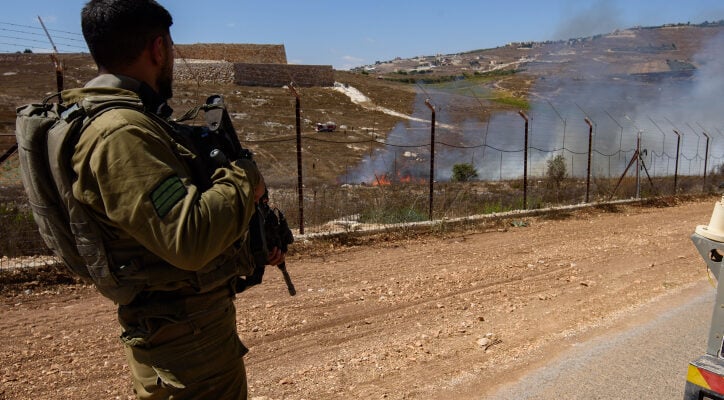As Israeli officials integrate AI, it is essential they do not become over-reliant upon it.
By Gregg Roman, Middle East Forum
The October 7, 2023, attack exposed vulnerabilities in Israel’s border defenses, highlighting the limitations of relying solely on technology.
As Hezbollah’s threats persist along the northern border, Israel must integrate artificial intelligence (AI) and human-supervised autonomous systems to enhance security.
Hezbollah poses a multifaceted threat. Hezbollah leader Hassan Nasrallah’s death does not make the group’s rocket arsenal, estimated at 150,000 projectiles, any less lethal.
The group’s tunnel network can facilitate surprise attacks. Hezbollah’s drone capabilities further complicate border security. Cyber warfare enhances Hezbollah capabilities.
Its experience during the Syrian civil war has allowed Hezbollah fighters to hone urban warfare skills and coordinate on a large scale.
The Israel Defense Forces (IDF) employs advanced systems to counter these threats. The Iron Dome protects against rocket attacks. The Alchemist system integrates data to identify diverse threats. Edge 360 detects potential dangers around armored vehicles.
However, Hezbollah’s evolving tactics necessitate defenses that are more comprehensive.
AI-augmented defense systems would expand these capabilities to address Hezbollah-specific threats. AI-powered cameras can scan the border, with machine learning identifying potential infiltrators and disguised launch sites.
Soldiers would receive real-time alerts about suspicious activities, similar to the Fire Factory system. Drone swarms would provide aerial intelligence, crucial for detecting Hezbollah’s mobile rocket launchers.
Underground sensors, enhanced by AI, would improve tunnel detection capabilities. Smart fencing would sense intrusion attempts, countering Hezbollah’s infiltration tactics. Electronic warfare systems would disrupt Hezbollah’s communications and drone controls.
Predictive AI would anticipate attack patterns, building on systems like Gospel to identify key Hezbollah targets and infrastructure.
Human judgment remains crucial in this complex environment. Soldiers interpret AI findings, make decisions, and lead operations against Hezbollah’s adaptive strategies.
The technology frees troops from routine monitoring, allowing them to focus on complex tasks requiring human insight.
Implementation requires developing AI algorithms tailored to Hezbollah’s tactics, expanding on systems like Fire Weaver. Sensor networks must cover the entire Lebanon-Israel border, building on the IDF’s Command, Control, Communications, Computers, and Intelligence (C4I) Branch’s experience.
Personnel will need specialized training to interpret AI insights about Hezbollah’s activities.
The approach offers flexibility in various scenarios, from low-intensity border skirmishes to full-scale conflict with Hezbollah.
Implementation would start with a pilot program, gradually expanding coverage. Costs likely would range in billions of dollars, covering hardware, software development, and specialized training for Hezbollah-specific threats.
Challenges include creating AI that is resistant to Hezbollah’s potential counter-measures and ensuring system reliability under the group’s electronic warfare attempts.
The military must balance automation with human oversight—especially critical when dealing with Hezbollah’s complex, often civilian-embedded operations.
As Israeli officials integrate AI, it is essential they do not become over-reliant upon it. Hezbollah is sophisticated and, once the group learns how the algorithm works, its fighters will adjust and embrace more unconventional tactics.
Concerns about AI target identification accuracy, already voiced in Gaza, are particularly relevant given Hezbollah’s strategy of blending with civilian populations.
After the decapitation of Hezbollah’s senior leadership, the group is out for blood. They will seek to stage a spectacular attack, something that can return a sense of strength and momentum to their followers, making the race between Hezbollah’s evolving tactics and Israel’s defensive innovations a matter of life and death.





